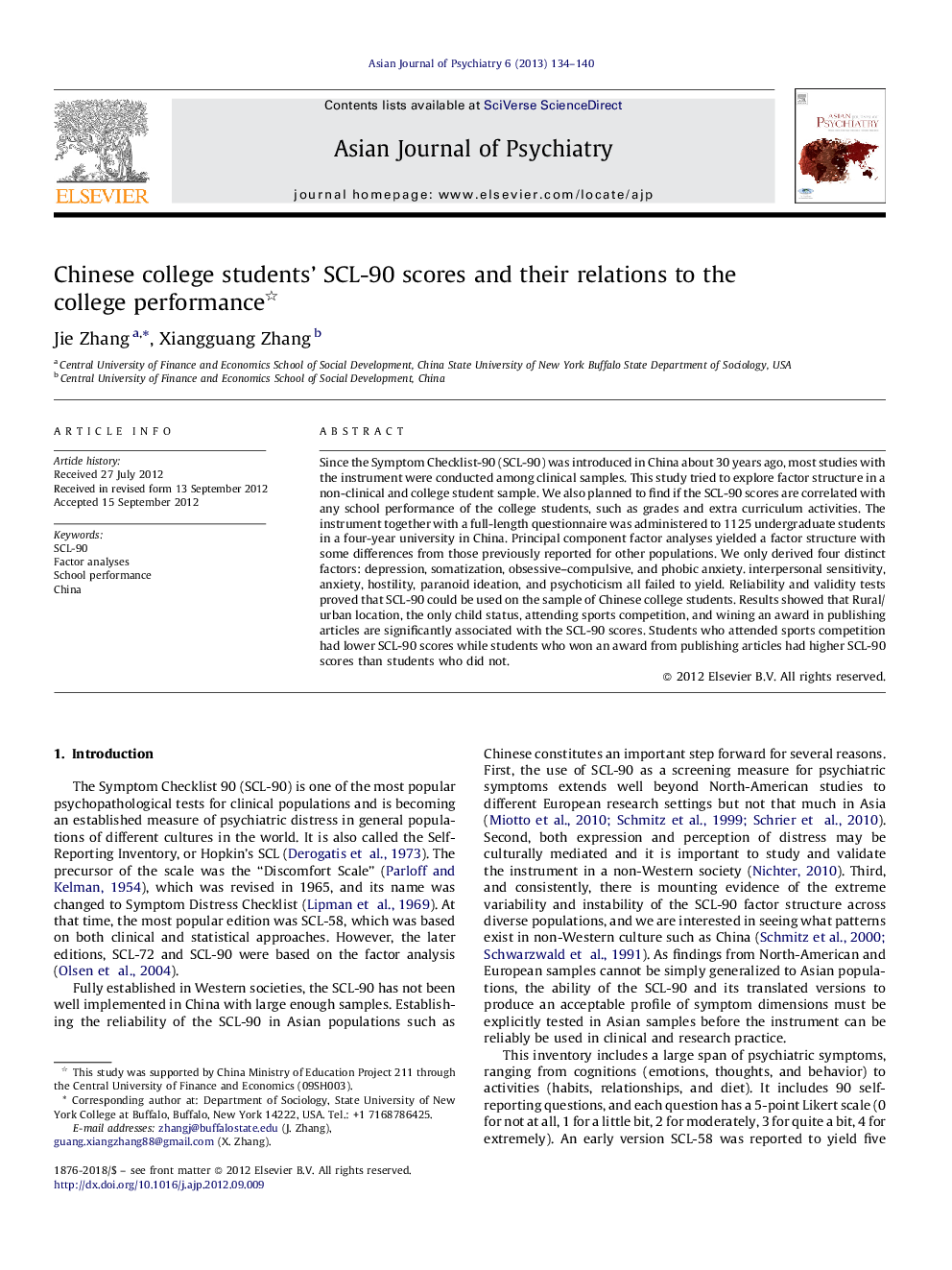| Article ID | Journal | Published Year | Pages | File Type |
|---|---|---|---|---|
| 315513 | Asian Journal of Psychiatry | 2013 | 7 Pages |
Since the Symptom Checklist-90 (SCL-90) was introduced in China about 30 years ago, most studies with the instrument were conducted among clinical samples. This study tried to explore factor structure in a non-clinical and college student sample. We also planned to find if the SCL-90 scores are correlated with any school performance of the college students, such as grades and extra curriculum activities. The instrument together with a full-length questionnaire was administered to 1125 undergraduate students in a four-year university in China. Principal component factor analyses yielded a factor structure with some differences from those previously reported for other populations. We only derived four distinct factors: depression, somatization, obsessive–compulsive, and phobic anxiety. interpersonal sensitivity, anxiety, hostility, paranoid ideation, and psychoticism all failed to yield. Reliability and validity tests proved that SCL-90 could be used on the sample of Chinese college students. Results showed that Rural/urban location, the only child status, attending sports competition, and wining an award in publishing articles are significantly associated with the SCL-90 scores. Students who attended sports competition had lower SCL-90 scores while students who won an award from publishing articles had higher SCL-90 scores than students who did not.
► This is one of the few systematic studies of the SCL-90 with Chinese populations. ► We used a large sample of Chinese college students. ► The factor structure of the instrument is basically the same in China as in the West. ► Students who attended sports competition had lower SCL-90 scores. ► Students who won an award from publishing articles had higher SCL-90 scores.
